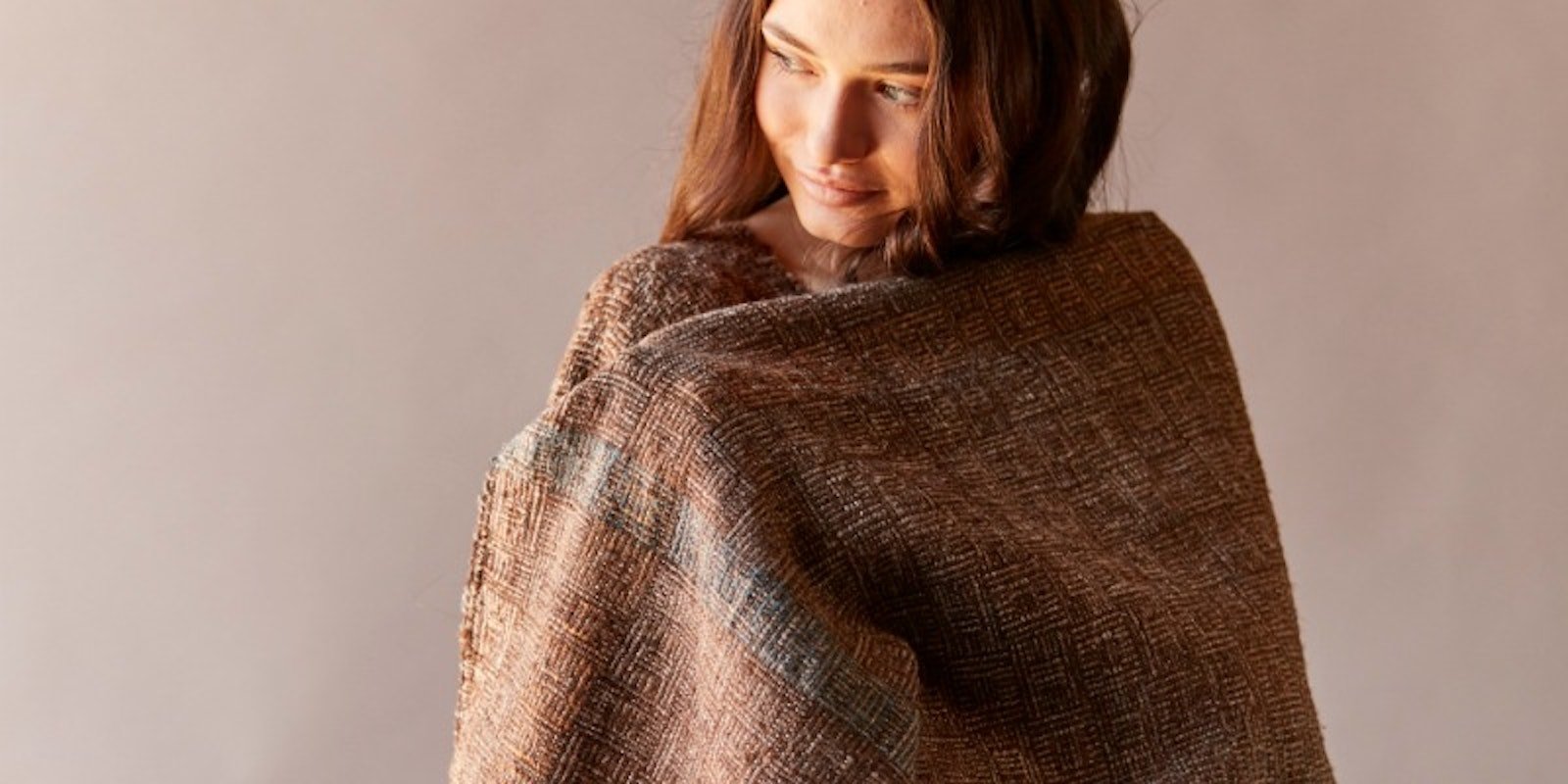You’ve probably heard of sheep to shawl, but what about sheep to ruana? For her spectacular Sheep to Shadow Weave ruana in the September/October 2018 issue of Handwoven, Margie Bell started out with a couple of fleeces and ended with a showstopper of a garment. If you love this ruana but don’t have the time or inclination to do it all, feel free to swap in commercial wool yarns for handspun or bribe a handspinner friend to help you out! Here’s what Margie has to say about her project:
Margie Bell’s shadow-weave ruana.
Designer Margie Bell’s Statement
I handspun the warp and weft for this project on a 130-year-old Canadian production spinning wheel with a 30-inch wheel. I like to imagine the many pounds of fiber that must have been spun on it over its lifetime, and I like that it allows me to spin thin yarns with a lot of twist. I chose fleeces based on their softness and fineness—the light-colored wool is Bluefaced Leicester and the dark wool is Cormo. I sorted, washed, and carded the wool and used it to spin a two-ply yarn at 12 wraps per inch. I made sure there were no thin spots or weaknesses in the yarn so the warp wouldn’t break.
For the striped sections, I solar-dyed yarn in gallon jars containing madder root, onion skins, or indigo, using alum as a mordant. I left the yarn in dye-filled jars in the sun for about a week.
I chose two shadow-weave drafts that intrigued me with their seeming complexity, although both are four-shaft drafts. I wove the ruana as two panels, warping and weaving them separately. After twisting the fringe and wet-finishing the panels, I sewed them together to create the back seam. For added strength at the top of the join, I inserted a triangle of leather.
Happy Weaving,
Christina
Project at a Glance
PROJECT TYPE: 4-shaft.
STRUCTURE: Shadow weave.
EQUIPMENT: 4-shaft loom, 24" weaving width; 15-dent reed; 2 shuttles; 4 bobbins.
YARNS: 2-ply handspun wool (1,520 yd/lb).
OTHER SUPPLIES: 4" piece of soft brown leather; heavy brown sewing thread.


